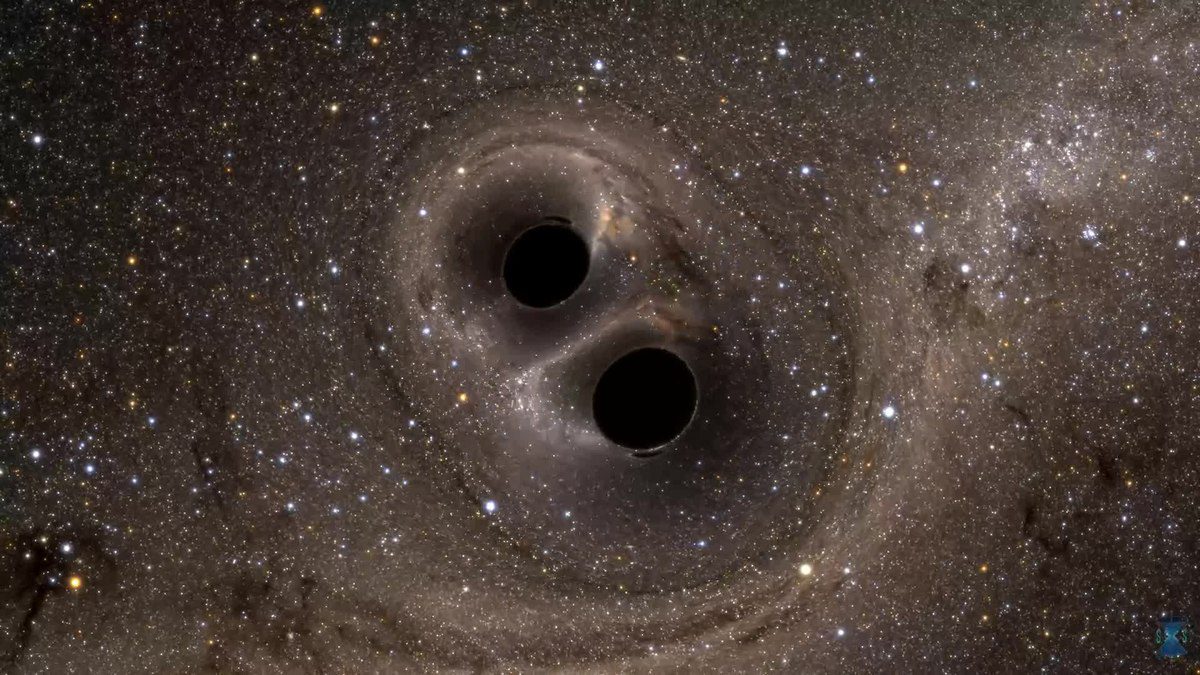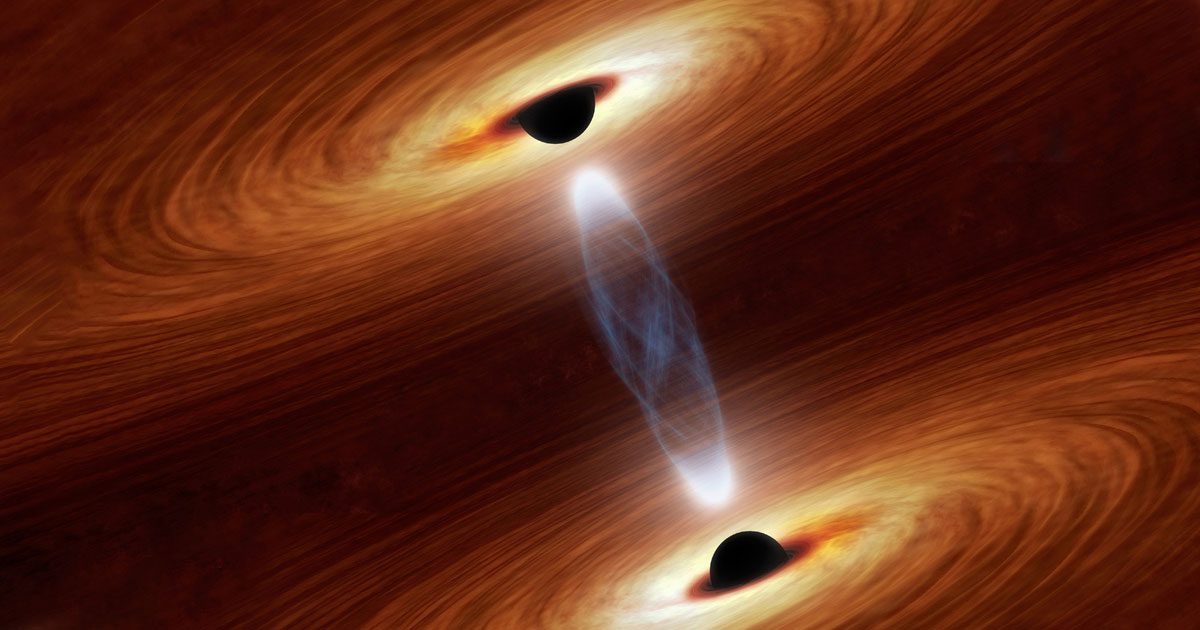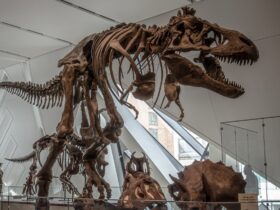A black hole’s structure is straightforward in the grand scheme of things. All you need to know is the black hole’s mass, electric charge, and spin to determine the structure of space and time surrounding it.
However, things get complicated when two black holes circle each other. Unlike a single black hole, for which Einstein’s equations have an exact solution, there is no precise solution for two black holes.
It’s analogous to Newtonian gravity’s three-body dilemma. But it doesn’t mean astronomers can’t figure things out, as shown by two recent studies.
When Two Black Holes Meet They Won’t Devour Each Other
Although Einstein’s equations do not have a perfect solution for a binary black hole system, they predict several binary black holes’ properties. Spin-orbit resonance is one of them.
When a black hole spins, the structure of space surrounding it twists in the rotational direction, a phenomenon known as ‘frame-dragging’.
When two black holes circle each other closely, one black hole’s frame-dragging impacts the spin of the other.
Consequently, the two black holes will tend to establish a resonance in which the rotations either align in the same direction (parallel) or the opposite direction (anti-parallel).
If spin-orbit resonance exists, binary pairs should have one of these orientations.

According to one recent research, this is the case. The researchers examined gravitational-wave data from known black hole mergers and discovered that their rotations are either parallel or anti-parallel.
There isn’t enough evidence to corroborate the impact due to the limited sample size and the fact that black hole binary rotations are never perfectly aligned. Still, the data we do have indicates in that direction.
A simulation of how the spinning of a black hole might affect an orbiting body BELOW.

One of the difficulties detecting black hole spin is that the signal is rather faint. The gravitational waves emitted by distant black hole mergers are so weak that they easily get lost in the din.
LIGO and Virgo observatories must perform exceedingly sensitive observations, and their data must be filtered using computer models.
The detection of mergers is made possible by a mix of data processing and computer modeling. Adding spin to the mix complicates matters even more.
However, in a subsequent publication, the team examined how to improve the outcomes. They discovered that the signal for spin resonance is highest immediately before joining.
That makes sense since that’s when they’re closest together and frame-dragging is at its peak.
However, the rotation information for binary black holes is now discovered by observing gravitational waves while circling one other.
The scientists demonstrated how models could assess the near-merger signal instead, yielding much superior outcomes.
They should confirm spin-orbit resonance in the foreseen future by using this novel technology to black hole mergers.
Gravitational-wave astronomy is still in its early stages, and we’re still learning how to collect and interpret data.
As these new studies demonstrate, gravitational waves contain a wealth of information, and with a bit of digging, there’s lots more we can learn.












Leave a Reply